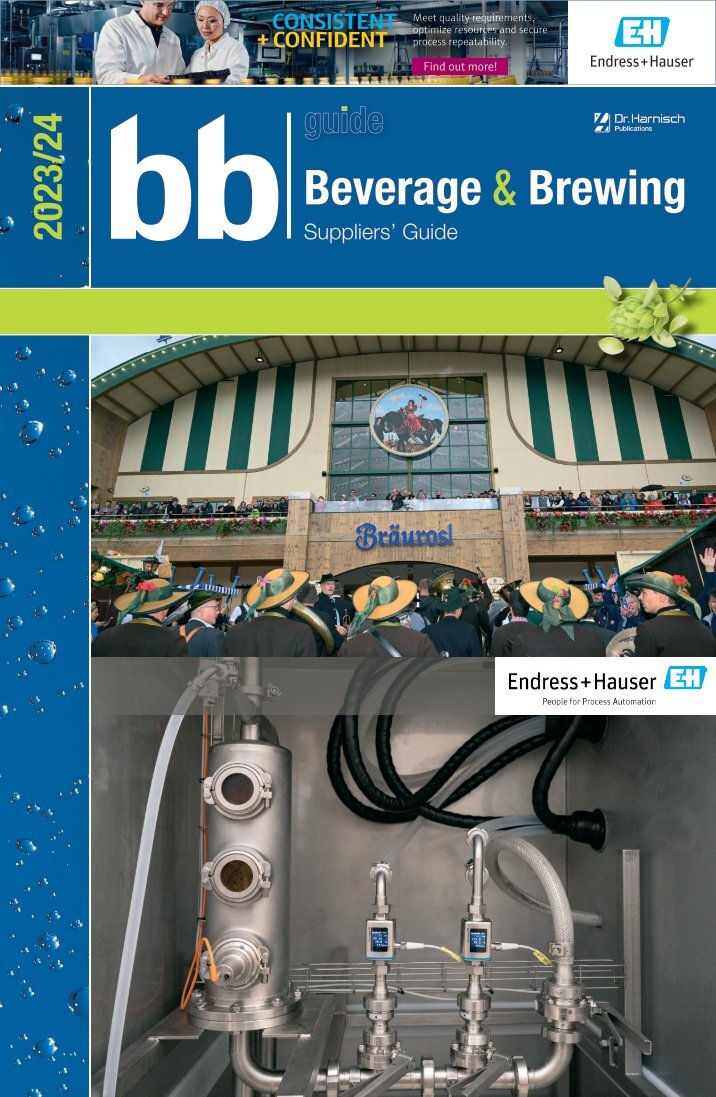The number of food product recalls has doubled over the past six years, with the most frequent instances involving products tainted with microbiological contamination and foreign objects. As the German industry publication Lebensmittel pointed out in an article on April 8, 2019, this statistic is nevertheless no cause for concern. Instead of product quality decreasing, the number of precautionary recalls has risen because manufacturers are being more sensitive and reacting accordingly.
The 2018 DLG trend monitor for investments and trends in the food industry indicates that 65 percent of the surveyed companies consider food safety a very important factor when making investments in plants and equipment. This contrasts to 15 percent of the respondents who indicated that digitalization has a similar priority.
Endress+Hauser furthermore came to the realization that 97 percent of the data currently captured by field instruments during the manufacturing process is not utilized. This is tied to a lack of connectivity, which is required to transmit the data from the devices, plus the fact that a higher engineering effort is needed in order to interpret this information.
How have we ensured food safety to date? As far back as 30 years ago, students interested in food industry careers were made aware of this issue by university professors even at the beginning of their studies.
Our food is as safe as ever. This high level of safety can be tied to three main pillars: scientific progress, modern food regulations and standards, and diverse quality management concepts. The first pillar encompasses knowledge from the field of microbiology and food preservation, in addition to safer packaging, the industrialization of food production and examination and control methods. The second pillar involves everything that is and isn’t allowed in the food industry. Furthermore, the industry has realized that comprehensive and effective food regulations require monitoring the entire food production chain, beginning with animal feed. The third pillar involves management concepts such as HACCP and ISO9001, which stipulate the proper operating procedures. If all three pillars already come to bear, can Industry 4.0 and digitalization improve food safety even further?

Cyber-physical systems
The virtual replication of production units or processes with the assistance of an abstraction layer, and its connection to real production systems, helps make processes more effective and efficient. This layer might involve a cloud-based database that virtually describes the product, as well as the process. The University of Applied Sciences Ostwestfalen-Lippe is collaborating on a project with Endress+Hauser that involves operating a beverage system flash pasteurizer as a cyber-physical system. In practice, the pasteurization process is still being driven with a highly idealized control model and high safety margins at the expense of additional resources (time, energy), which negatively impacts product quality. The optimized pasteurization approach ensures that the product is tested with online advanced analysis technology before and after pasteurization, while individually adjusting it to the hot-holding temperature and time. This method guarantees that the product is manufactured with maximum microbiological safety and minimal thermal burden. Endress+Hauser has thrown its weight behind this project, which is being funded by the German Federal Ministry for Education and Research.
Smart sensors with permanent self-diagnostics and process-diagnostics
Advanced mass flow measurement systems such as the Proline Promass family measure the density and concentration of the medium, in addition to the mass flow. To date however, key information such as exciter current and vibration frequency and amplitude, as well as 700 other parameters captured by the sensor system, are hardly used. Conclusions can be drawn from this process data, such as whether the medium contains gas bubbles or if deposits are forming in the process. Level sensors such as Levelflex and Micropilot can detect unexpected foam build-up by analyzing this data. These instruments also use the data to perform continuous self-diagnostics, thus enabling instrument verification without interrupting the process. This type of monitoring can also be used as a form of documented verification in order to start processes in which precise dosages of the recipe ingredients are essential for product safety. Production continues to run only after the instrument has completed the self-verification. One field of application here is baby food manufacturing. Endress+Hauser merges all of these new features into the Heartbeat technology concept.

Data mining and self-learning systems
By collecting measurement data and comparing current and historical information, food industry plant operators are in a position to detect quality and process issues at an early stage. The Fraunhofer Institute Dresden is testing new intelligent tank cleaning methods for instance. The oversized, inefficient cleaning systems still in use today are designed to operate at the highest degree of residue and contamination. In addition, there is limited capability to monitor inline cleaning and automatically document the outcome of the cleaning process. With this in mind, the institute set out to develop a needs-based tank cleaning approach. This type of cleaning system relies on a self-learning process control system and an optical contamination sensor that direct an adaptive, rotating dual-axle jet cleaner. This allows more targeted cleaning of heavily soiled parts of the tank, such as the nozzles and fill level collar, than the rest of the tank’s inner surface. In turn, reducing the use of cleaning solutions and the amount of time invested in the cleaning process saves costs.
Digitalization of production systems
Instruments and production systems generate valuable information during installation, commissioning, utilization and maintenance across the entire life cycle. Today, this data is mainly available only a local basis from its creator. This begins with engineering and procurement data and stretches to technical documentation and parameters, then finally ends with the spare parts lists, inspection reports and material certificates. In case of unwanted downtime or an audit, plant operators need immediate access to this information. A QR code generated by Endress+Hauser thus enables access to instrument-specific documents with the assistance of an operations app. Other information can be supplied in real-time via the Endress+Hauser Netilion IIoT ecosystem, such as the current status of the installed base of process control instruments. The only thing that is required for the system to access this live data is the installation of an edge device with Internet access. A manufacturer-independent list of all installed instruments is automatically supplied. The only requirement is that the instruments have a PROFIBUS or HART communications interface.
Krones AG erected a highly-advanced research brewery at its Steinecker Brew Center, where QR codes can also be found on all system parts and components. The codes, which serve as the gateway to the Share2Act cloud-based social network for production systems, permit plant operators to post images, comments or other important information that can help to quickly find a solution if a problem arises. The digital representation of the system thus turns into a valuable pool of knowledge. If the user wishes to have access to this information directly within the production environment, the installation of an industrial WiFi network is essential. One result of this development is that smartphones and tablets will increasingly become part of the work environment.
Where does the food industry stand today? Ever since the German government created the Industry 4.0 project in 2013, diverse companies have developed individual approaches to digitalizing the food industry. These isolated solutions yield the user only limited benefits however. For this reason, information service provider KEX Knowledge Exchange AG launched a consortium project in 2019 in which Endress+Hauser and other well-known system and component manufacturers, food and beverage producers, plus retail companies and research institutes, joined together to convert these isolated solutions into comprehensive applications. Applications that unleash the benefits of digitalization across the entire industrial value chain.
Summary
When it comes to food product safety during the manufacturing process, the benefits of digitalization will be indirect for the most part. Process optimization, production monitoring and maintenance can reduce the effort required to maintain a high level of safety. The food industry is still in the early stages of a development in which paths leading to additional developments will be generated from the legacy solutions. Parallel to these efforts, the industry must be able to meet the challenges of IT security, uniform standards for connectivity and hardware, the legal aspects of data privacy and the training and education of qualified specialists. While digitalization can help companies gain mastery of an increasingly complex industrial environment, it must not evolve into a driver of complexity itself.












